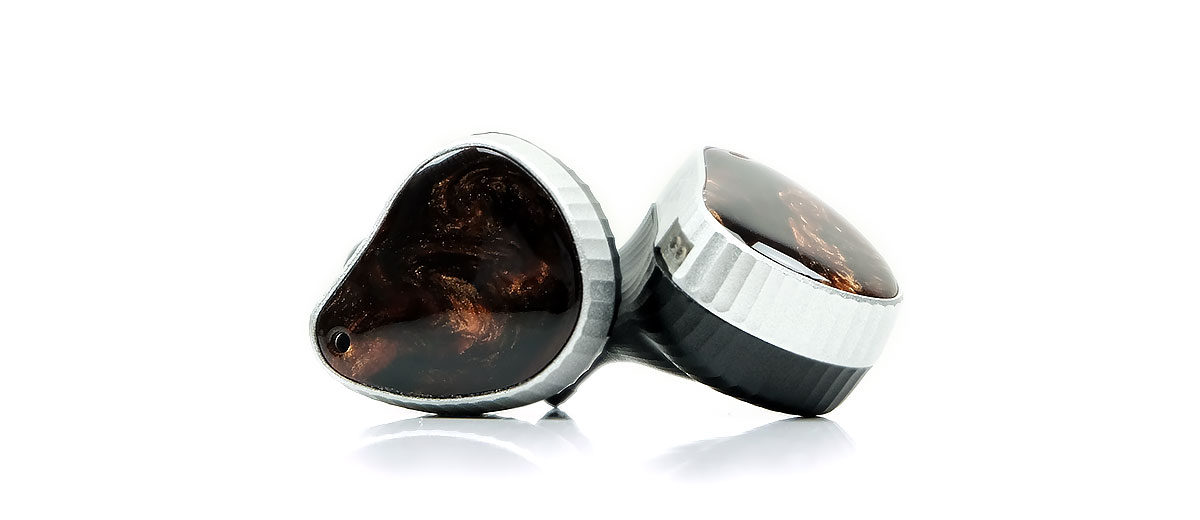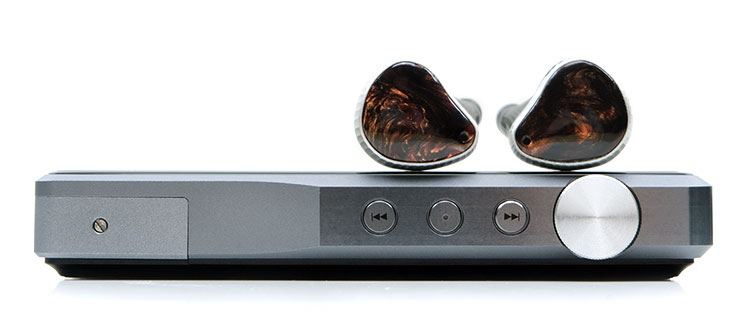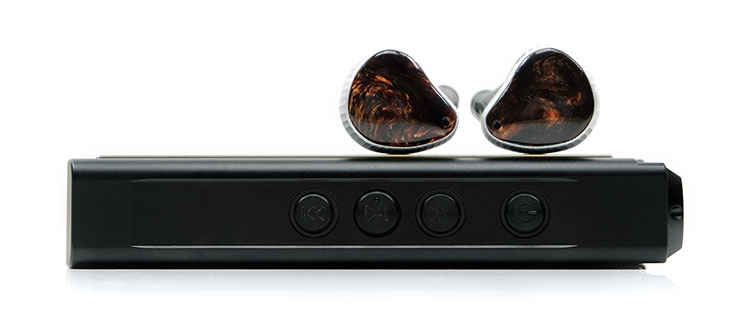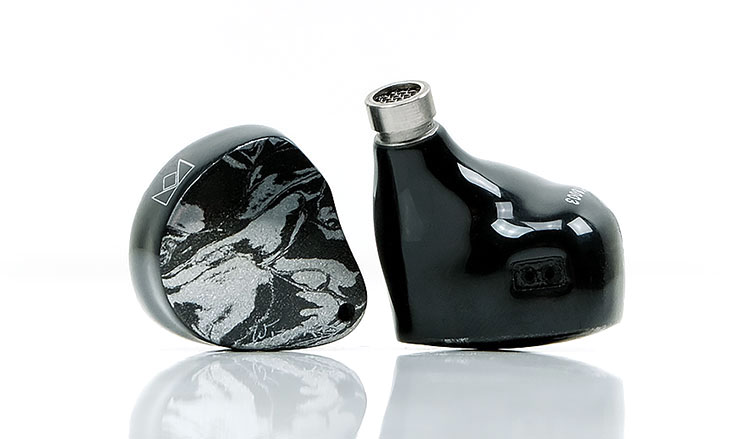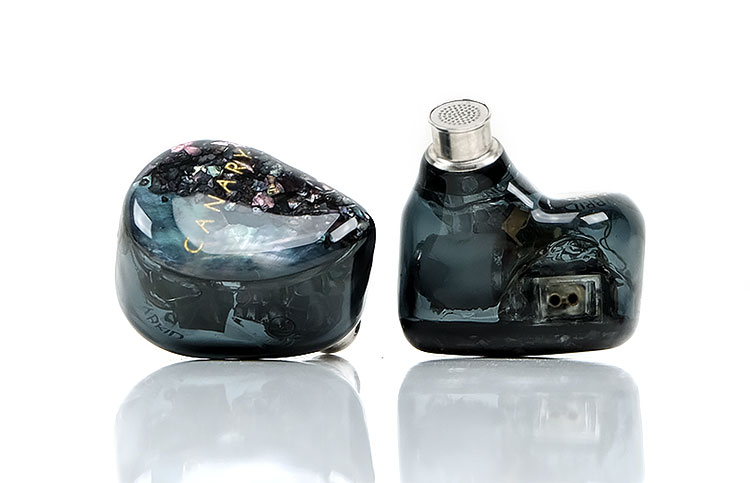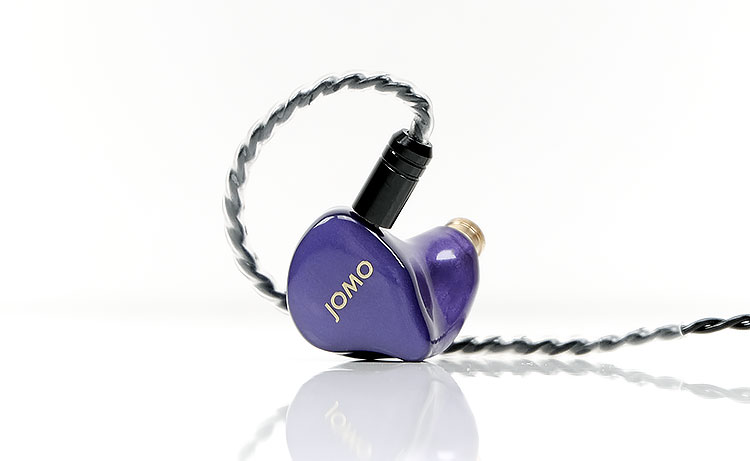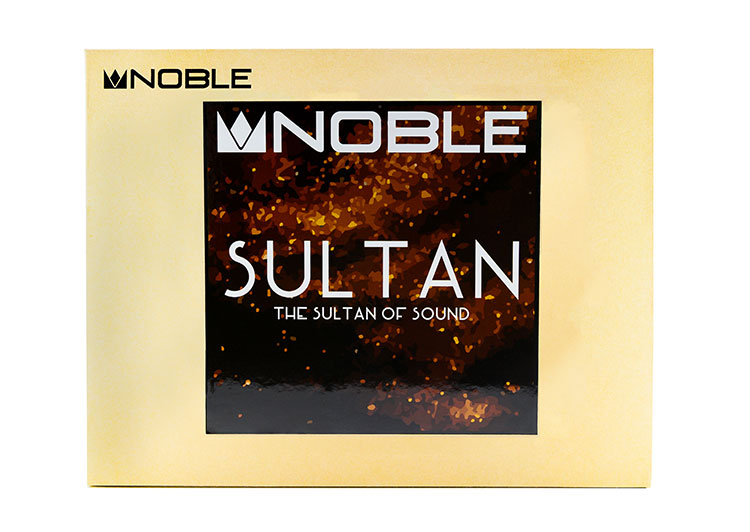Noble Audio Sultan Sound Impressions
Summary
The Sultan has a beautiful mix of low-end power, midrange clarity, and a smooth but well extended top-end response. This is not a neutral monitor by any stretch of the imagination but it is a joyful sound with a slight bias to euphony over accuracy.
It is also the kind of engaging but versatile tuning that pairs fantastically well with hard rock, pop, and EDM with a ‘driving’ but detailed performance.
The overall presentation is mildly w-shaped with excellent dynamic drive timbre, a slightly long decay, and excellent depth. It is beautifully complemented with precise and detailed midrange BA drivers that seem to stretch into the lower-treble with a great vocal presence. This is topped by a very fine sprinkle of those new Sonion electrostatic drivers.
Those coming from the Khan will find an altogether different experience with the Sultan treble. In a way, it reminds me of the Savant II tuning but on steroids with that big 10m driver throwing in a ton of PRAT rather than going clean and pristine like the Katana or the Khan.
The top-end, in particular, has a very refined and smooth delivery but as always with Noble Audio they are not afraid to give it some presence. It is far less rounded or relaxed sounding than the likes of AAW’s Canary offering some nice energy right up to around 8-10k.
The treble texture is also very different from Khan’s piezoelectric driver with a fast but almost liquid timbre compared to the Khans drier tone. This creeps down into the mids ensuring you get some nice clean contrast against that low-end warmth.
Staging
The Sultan is big sounding with a ton of depth yet at the same time sounds pretty clear and detailed in the mids. The treble extension is not short of headroom but it is not as forward as the Khan’s tuning. It has a very slight fade or at least the bump is shaved off a little from 6-8k.
Lower-mids pick up a bit of warmth and power from the forward low-end so they sound very planted rather than thin and overly distant in the background. Bass guitar plucks come through very loud and clear on the Sultan and yet still, you get plenty of space for vocals to shine.
Vocals on the Sultan are forward, particularly for higher-pitched vocals but they are not quite as forward as the Khan. The Khan was fairly strong around 2-3k and the Sultan feels closer to 1-2k and slightly milder which is great for some male vocals which often get a nice natural sounding lift without diminishing lower-mids instrumental presence.
Female vocals, depending on the pitch, sound a little further forward than male vocals for me and they do get a little cleaner with a slightly heavier mix of upper harmonics from the Sultan treble tuning.
One final big difference is percussion presence. The Sultan just drops this down a little on the upper mids compared to the Khan so it picks up a little less treble energy and a bit more euphony which delivers a sweet more natural sound that blends in rather than dominates.
Timbre
Often with Noble Audio, they can roll out an eclectic mix of different sounding IEMs that can range from warm and rich like the Savant II and previously the Noble X Massdrop to the clean and clear like the Katana and Khan.
The Sultan, however, is probably the first monitor I have heard from them that successfully mixes in a large amount of both, and I guess the revised hybrid configuration allows them to do it. Let me explain what I mean by that.
Piezoelectric to Electrostatic
The Khan’s piezoelectric driver, combined with a slightly different BA tuning delivered a precise, fast but dry tone. The timbre below picks up on that with a more dominant upper harmonic order which in turn creates some brighter partial overtones on string, vocal, and percussion.
The Sultan’s new tuning combined with the Sonion electrostatic drivers seems to have taken a little edge off the top-end and also just dropped the elevation off the upper-mids to deliver a more liquid treble timbre.
Percussion does not have the same bite or presence on the Sultan as a result but it does sound more natural and blended to my ear. You may beg to differ if you loved the more energetic sound of the Khan from 3k onwards.
Midrange Euphony
That, in turn, seeps down into the vocal and midrange instrumental timbre which is also wetter but fuller and richer sounding. However, it is not rounded or dull and Noble has done well to tone down the upper-mids and treble energy just enough to keep the clarity and avoid moving into ‘lush territory’.
Further down, the timbre thickens up with that 10mm dynamic driver sounding much more aggressive and forward. Lower-pitched instrumental timbre is warmer, the pace slightly slower albeit with a very solid fundamental.
Lower voicing also sounds a shade warmer and smoother than female vocal timbre which can pick up a little more contrast the further up the scale you go.
Synergy
The Sultan is surprisingly efficient for a dual electrostatic monitor. I had to stop for a second and wonder if this was a gen 1 or gen 2 Sonion transformer configuration for the electrostatic drivers such is the gap between it and something like AAW’s Canary which is rated at 100dB SPL.
The Sultan got louder faster, way faster with almost a 20 step gap in the volume compared to the Canary and 15-17 steps compared to Jomo Audio’s Trinity.
Now, that is not to say the Sultan is super sensitive. Generally, Noble Audio monitors hover around the 30Ω marker with reasonable SPL and it does help that Noble has given us a clue with its sub-35Ω spec sheet. However, if you are grading the Sultan in terms of how easy it is to drive I would say this is one of the better ones in that regard.
Hiss is a possible issue with that heightened sensitivity but not to Campfire Audio Andromeda or Empire Ears Zeus levels. You will pick up some moderate hiss from the Cayin E02 and FiiO M11’s balanced 4.4mm output but nothing pervasive.
Hifiman’s R2R2000 is also a little hissy with the Sultan but on the low side so not very distracting. Its bigger issue is current with less than 4-5 steps low-gain useable whereas the Canary and Trinity can suck up 15-17 steps and 10 steps respectively.
Other DAPs such as the Lotoo PAW Gold Touch, PAW 6000, FiiO’s M15, and iBasso’s DX220 had some very good low noise performances and enough headroom for current demands from the Sultan.
Select Source Pairings
Other than high noise floors or super-soft source presentations the Sultan is a very flexible monitor for pairings. It can easily scale in terms of the dynamic range with a good DAP.
Hifiman & Cayin
This is where something like the Hifiman R2R2000 is so addictive despite the low-level of hiss and aggressive volume levels. The airiness and vocal focus is just excellent when hooked up the Hifiman DAP/BT receiver. Bass is articulate, aggressive but very tightly defined also.
I had a similar natural and smooth timbre on the Sultan with Cayin’s N6ii/E02 pairing though not quite the same airy top-end as the R2R2000. You do get a less aggressive volume on the Cayin pairing with their excellent 3 stage gain setting.
The R2R2000 Red might be a bit too euphonic for some with foam tips so you can either switch to the stock silicone for a more balanced timbre or upgrade to the black R2R2000 which is far more neutral when paired with the Sultan.
Lotoo
You can get that same level of dynamic range on the Lotoo PAW Gold Touch only with a slightly cooler timbre and a bit more treble presence. That should work actually if you prefer to use the foam stock tips which can warm up the tone comparatively speaking.
I would also suggest using the silicone tips with the Lotoo PAW 6000 to start off with. The PAW 6000 is weightier and warmer than the flagship Touch so the low-end of the Sultan might dominate. Perhaps EQ down by 2-3dB from 100Hz downwards to get the same effect.
FiiO & iBasso
You will not need PMEQ or more porous tips with the FiiO M15 pairing. This a very balanced and precise pairing and one which doesn’t push hard on the low-end quite like the PAW 6000 so foam tips are spot-on for FiiO’s reference player. The low-end is still potent but you get plenty of staging openness and treble clarity to go along with it.
I also had a fairly similar experience with the reference sound of the iBasso DX200/AMP1 MK2. The black background on this pairing is also stellar right up to high gain balanced or unbalanced.
Select Comparisons
Noble Audio Khan
$2399
Technical
The Khan is not being replaced by the Sultan rather it moves down the ladder a little with the Sultan now the TOTL universal from Noble. This was their original ‘tri-brid’ with a 10mm dynamic for the lows, 4 BA for the mids, and a single piezoelectric driver for the highs.
The Sultan changes things with dual Sonion gen 1 transformer and electrostatic drivers for the highs but keeps the 4 BA and 10mm driver for the mids and highs. I cannot say for sure they are the exact same drivers, certainly, the tuning is different.
Design-wise the Sultan is a bit of a leap up from the Khan. Not that the Khan was mundane looking. I actually thought its modern M3 composite twist on the traditional Mokume Gane metallurgy to be an attractive design. Rather the Sultan just ups the ante for me with its unique faceplate and wider body shell. That being said, smaller ears might appreciate the Khan’s smaller size.
The Sultan OFC 8-core cable is also a step up on the Khan’s 4-wire SPC tensile braided build. Well, certainly more muscular looking and built to a higher spec. However, I always thought the stock cable on the Khan to synergy quite well.
Performance
The Sultan does seem to be more sensitive than the Khan with more detected low levels of hiss from the Cayin N6ii/E02 and FiiO M11 balanced pairings. It also can only run on half the current levels of the Khan when paired with Hifiman R2R2000 so it is definitely a higher SPL in favor of the Sultan.
I can’t say for sure if impedance or SPL is a factor or both since we do not have the data at hand. However, it does have a black background with the likes of the Lotoo PAW Gold Touch and 6000 as well as a good performance on the FiiO M15. There were no noise issues either on the Sony 1Z.
Tuning
These are two quite different sound signatures. The first thing that is going to strike you is the top-end coloration and low-end girth, both of which affect the midrange timbre and voicing.
The Sultan has more elevation from 50-200Hz and slightly less of a dip into the lower-mids. It also seems to have less of an upper mids peak and treble rise. I would say there is more of a 1-2k emphasis on the Sultan and less energy around 5-7k also compared to the Khan.
You can clearly hear the different texture created by the BA to the piezoelectric and the BA to Sonion electrostatic tuning. I have never found the treble on the Khan to be harsh but it is drier and brighter than the Sultan top-end which is wetter and fuller sounding.
That tweak in emphasis, in turn, seeps into the upper midrange timbre of both monitors with different outcomes. The Sultan retains a smooth natural sound, aided by some additional warmth and power from the low-end. The voicing is fuller, more rounded, and natural in delivery.
The Khan drier is slightly thinner but more energetic and dominant to my ear. Percussion’s presence and bite’ is much more of a “thing” on the Khan than the Sultan.
And the power, something with the Sultan edges ahead on. Not an overpowering tuning but meatier and carrying more warmth upwards. String timbre has a bit more decay and a liquid attack but also some excellent fundamentals shining through.
The Khan is lighter, leaner but still very punchy. With less warmth coming into the mids the instrumental timbre also sounds cooler and drier.
AAW Canary
SG$2,999
Technical
The Canary is AAW’s flagship monitor and like the Sultan a hybrid electrostatic configuration. There is a total of 7 drivers with a dual-diaphragm 6mm push-pull isobaric woofer (dynamic), 4 BA for the mids and highs, and a dual electrostatic tweeter array for the super highs.
The Sultan also uses 7 drivers of the same mix and grouping but a larger 10mm dynamic driver instead of the isobaric inside the Canary.
In terms of design, the Canary uses a small and lighter acrylic form factor with a slightly comfier fit and a turquoise Pearloid finish. Whereas the Sultan uses a CNC machined aluminum body and unique faceplate inserts. The Canary has the slightly better isolation due to that contoured custom universal form factor that can press a bit tight to the ear than the aluminum.
The cables on both are excellent. The Canary uses a Null Audio Hakone 1.2m 26AWG UPOCC Litz silver/copper wire (2 x 2 staggered multi-density wire) with a PVC translucent jacket and terminated with a rhodium-plated 2.5m TRRS jack.
The 8-core OFC from Noble is no slouch either though the internal Litz geometry of the Hakone is a more complex build. SPC also teases out a bit more high-frequency resolution so it can be feistier than a typical warmth and earthy copper cable.
Performance
The Canary does seem harder to drive than the Sultan also in terms of SPL current requirements. There was around a 20 step gap in the two for volume matching on the Lotoo PAW Gold Touch and 3 times as much current required from the R2R2000 which is substantial.
We do know the Canary is rated at 100dB SPL and 16Ω impedance which is fairly normal for gen 1 e-stat drivers. That could place the Sultan closer to the 108-112dB level which is pretty good. On the flip side, the Canary is fairly impervious to any DAP high noise floor. That includes the Cayin N6ii/E02, balanced 4.4mm from the M11, and the R2R2000.
Tuning
Between these two there is one large difference in the tuning and a few more nuanced variations. The first is that low-end. The Canary is pretty good in that respect, sounding well extended and punchy at the same time. However, the amount of body and power the Sultan larger 10mm driver generates is greater.
As a result, the Sultan sounds the more planted of the two low-end drivers and generates a bit more staging depth at the same time. I suspect the 20-80Hz region is a few dB higher than the Canary equivalent and to be honest the Canary sounds more graceful than aggressive in its bass response.
I would say the dip into the lower-mids sounds a shade more aggressive on the Sultan compared to the Canary. Both carry some nice warmth into the lower mids but the bass to mids transition on the Canary feels more linear and once again slightly on the polite side in terms of bass fundamental and treble contrast.
That can mean the mids on the Canary sounds a little safe and not as exciting as the higher contrast sound of the Sultan. Vocals on the Canary have a mild 1-2k bump but they are not as focused and upfront as the Sultan. They have a more languid placement also that can play second fiddle to busier lower-pitched instruments.
Sultan’s treble tuning has more body and lower-treble forwardness so percussion has more presence and contrast. Vocals on the Sultan have a bit more natural sibilance to them. The Canary shoots for a mild lift in the upper treble producing a slightly ethereal top-end feel to an otherwise softer instrumental timbre.
Jomo Audio Trinity
SG$3,799.00
Technical
The Trinity was our first official Sonion electrostatic hybrid monitor review at the beginning of 2019 and thought very highly of it, as we still do now. Like the Sultan, the Trinity is a 7 driver hybrid with a single 8mm dynamic driver for the lows as opposed to a 10mm in the Sultan.
Both have 4 BA for the mids and in the case of the Trinity, the highs with the dual electrostatic driver for the super highs. Does the BA group of the Sultan slip into the highs? My guess is that it does as normally gen 1 e-stat drivers are super tweeters.
That would also mean both would be using a 4-way crossover but we are in the realms of guesswork at this stage due to the lack of technical data on the Sultan to compare. We do know the Trinity is indeed using a 4-way crossover.
In terms of design, the Trinity follows the Canary way with an all-acrylic hollow body and aggressive custom universal contouring. The Sultan’s CNC machines aluminum body is more durable but heavier and bigger in the ear. Also, the Trinity nozzle is much short but given its smaller size it doesn’t need to be that long.
The Sultan does have a better cable for me. The Trinity cable is a 1.2m 4-core SPC Litz wire wrapped in a fairly light PET jacket with some branded finishing on the barrels. With an 8-core OFC design and also a branded finish the Sultan’s stock cable is just that bit better in terms of dynamic range performance. Physically it is heavier but both are light in microphonics and easy to manage.
Performance
The Trinity is rated at a fairly reasonable 30Ω but at a demanding 96dB SPL. Like the Canary, it is less efficient compared to the Sultan by a considerable margin.
However, like the Canary, it is less sensitive than the Sultan to high noise floors. You will not have any issues with hiss from the likes of the FiiO M1 balanced output or the Cayin E02 but you will need more volume or current. Both play out just fine with black backgrounds on the Lotoo DAPs, FiiO’s M15, and the Sony 1Z.
On the Lotoo PAW Gold Touch, this was about 15-17 steps higher in low-gain compared to the Sultan. The current requirements were double that of the Sultan when paired with the Hifiman R2R2000.
Tuning
The weighted tuning on both of these are really aiming for a similar audience but for me, the Sultan is the more vivid sounding of the two. That is likely again to come from the slightly larger and more planted sound of that 10mm low-end dynamic driver compared to the 8m inside the Trinity.
The Trinity low-end has good quantity, but just slightly less sub-bass presence compared to the Sultan. There is also not quite as much contrast in the upper mids to treble tuning so it sounds full-bodied but also a little softer throughout.
Midrange instrumental notes and vocals on the Sultan also sound denser with a bit more texture. They are supported by that excellent low-end fundamental and higher treble contrast whereas the Trinity is a little ‘whispy’ and softer sounding.
The Sultan’s comparatively elevated treble does help flesh out that vivid sound as mentioned earlier. Percussion has more bite and sparkle, vocals have more natural sibilance. There also seems to be a shade more headroom on the Sultan top-end with a bit more midrange focus on the Trinity.
Overall, the Trinity sounds slightly more relaxed and forgiving than the Sultan even though it is aiming for a similar style of tuning. The smaller dynamic driver is relatively easy to pick out on an A/B, sounding narrower and punchier but with less depth and rumble.
Our Verdict
I honestly cannot pick any holes in the Sultan’s performance, at least from a personal perspective. It is a vivid and exciting blend of different driver timbres that tease out some excellent power, clarity, and above-average headroom. If you are sitting on the Savant II wondering where to go to next then this is it.
It has some outstanding low-end PRaT without the annoying vague bloom that can sometimes interfere with mid’s presence. Treble clarity is excellent and the fine balance you hope for between articulation and solidity is very naturally delivered.
Reference sounding the Sultan is not, even though its technical capability is outstanding. The enjoyability factor is high and I cannot see myself analyzing too much with the Sultan in my ears. Yet, it is also flexible enough to marry well with a wide range of genres though I think modern rock and pop should be its forte.
And yeah, it looks beautiful, their most evolved creation to date for sure. Coming off the Campfire Audio Ara review recently, the Noble Audio Sultan is almost the perfect complement to that hi-fidelity tuning. This is a big and bold sounding monitor.
Noble Audio Sultan Specifications
- 7 driver arrangement
- Tri-level hybrid technology
- 3 types of driver technologies implemented in the design
- 1 10mm dynamic
- 2 ultra frequency electrostatic
- 4 balanced armature drivers
- Proprietary CNC aluminum body with unique hand-finished faceplate
- Impedance less than 35 ohms
- Hand-assembled and matched
- Sensitive enough for use with most smartphones as well as portable amps and daps.
- Detachable cable with industry-standard 2-pin configuration (0.78 mm diameter)

